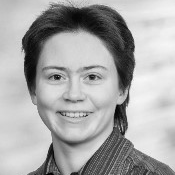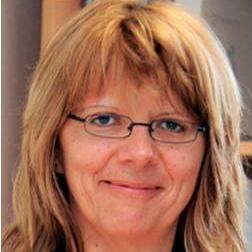Artificial Intelligence for Crystal Growth and Characterization
A special issue of Crystals (ISSN 2073-4352). This special issue belongs to the section "Crystal Engineering".
Deadline for manuscript submissions: closed (31 July 2022) | Viewed by 18983
Special Issue Editors
Interests: materials for efficient energy conversion and energy saving; crystallization of functional materials; bulk crystal growth, ammonothermal synthesis; solvothermal synthesis; (wide bandgap) semiconductors; metastable materials; numerical simulation of crystal growth processes; machine learning; artificial intelligence; in situ monitoring of crystal growth processes
Special Issues, Collections and Topics in MDPI journals
Interests: high-throughput density functional theory, applied thermodynamics, and materials informatics; metastable materials, nucleation and crystal growth, synthesis and processing science; materials discovery and design in uncharted chemical spaces
Interests: numerical simulation of crystal growth processes; machine learning; artificial intelligence; bulk crystal growth of semiconductors and oxides; crystal growth in magnetic fields
Special Issues, Collections and Topics in MDPI journals
Special Issue Information
Dear Colleagues,
Machine learning and artificial intelligence methods in general have recently reached a stage at which they become increasingly useful to researchers in other fields. The goal of this Special Issue is to promote the use of those methods in the field of synthesis and characterization of crystalline materials. By bundling reports from all subdisciplines of crystal research and technology, this Special Issue aims at facilitating inspiration across all subdisciplines of crystal research. Sharing of developed software tools is particularly encouraged (for instance, by means of a public Github repository, or a private repository that can be shared upon request of interested authors, author’s webpages, etc.) but not mandatory.
Topics include but are not at all limited to: AI for high-throughput crystal characterization (e.g., AI-based evaluation of optical/SEM/AFM/X-ray images), AI for optimization of crystal growth processes, AI for identifying previously unrecognized but relevant process variables, AI for acceleration of numerical simulations related to crystal growth, AI for predictions of stability of crystalline materials, AI for prediction of synthesis outcomes, and AI for prediction of properties of crystalline materials. Topics beyond these suggestions are also very welcome, as long as they fit the outlined scope of the Special Issue.
Dr. Saskia Schimmel
Dr. Wenhao Sun
Dr. Natasha Dropka
Guest Editors
Manuscript Submission Information
Manuscripts should be submitted online at www.mdpi.com by registering and logging in to this website. Once you are registered, click here to go to the submission form. Manuscripts can be submitted until the deadline. All submissions that pass pre-check are peer-reviewed. Accepted papers will be published continuously in the journal (as soon as accepted) and will be listed together on the special issue website. Research articles, review articles as well as short communications are invited. For planned papers, a title and short abstract (about 100 words) can be sent to the Editorial Office for announcement on this website.
Submitted manuscripts should not have been published previously, nor be under consideration for publication elsewhere (except conference proceedings papers). All manuscripts are thoroughly refereed through a single-blind peer-review process. A guide for authors and other relevant information for submission of manuscripts is available on the Instructions for Authors page. Crystals is an international peer-reviewed open access monthly journal published by MDPI.
Please visit the Instructions for Authors page before submitting a manuscript. The Article Processing Charge (APC) for publication in this open access journal is 2600 CHF (Swiss Francs). Submitted papers should be well formatted and use good English. Authors may use MDPI's English editing service prior to publication or during author revisions.
Keywords
- Artificial intelligence
- Machine learning
- Crystal growth
- Characterization of crystalline materials
- Novel crystalline materials







